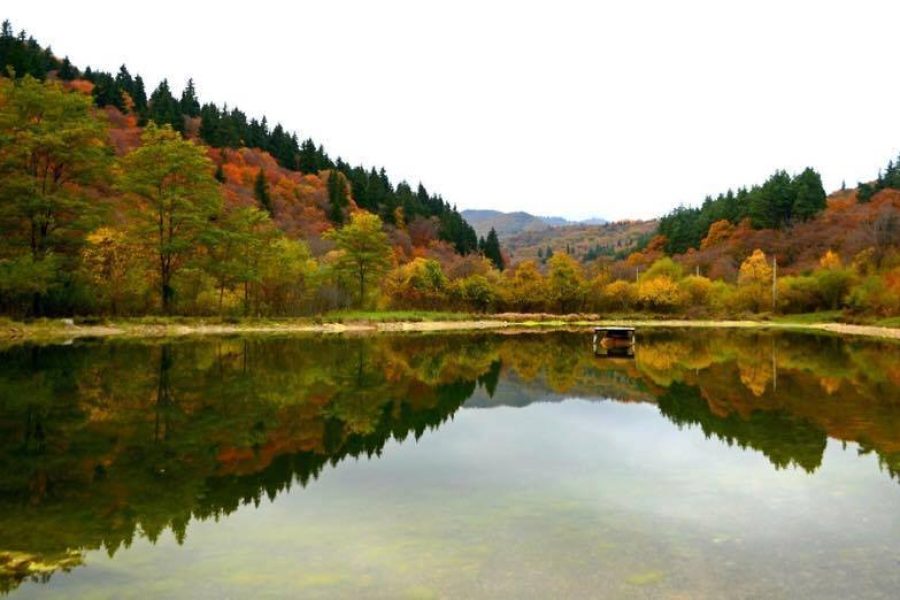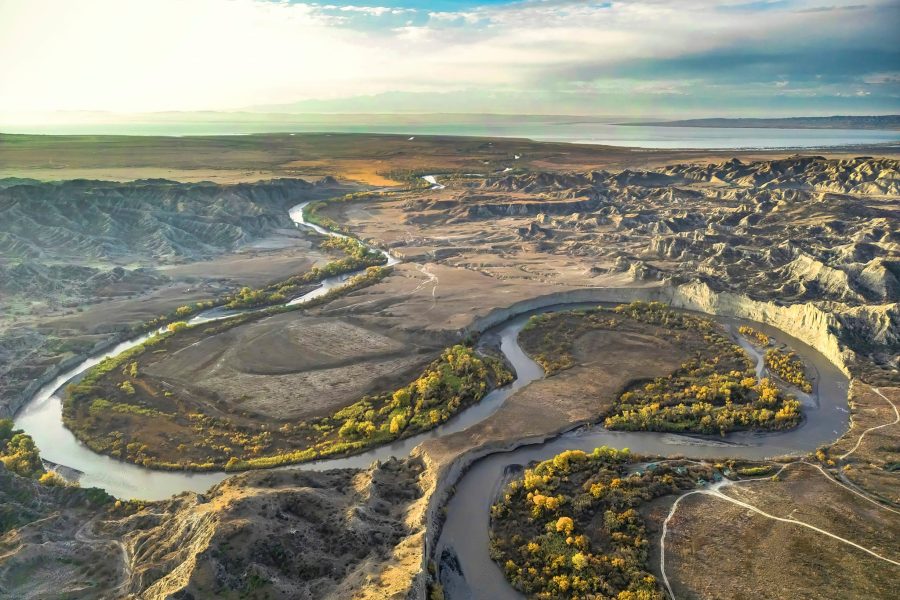The Gumista River: Sukhumi’s Twin Rivers
The Gumista River (მდინარე გუმისთა) is a major river in Abkhazia, Georgia, flowing just to the west of the capital city, Sukhumi, before emptying into the Black Sea. The river is unique in that it is formed by the confluence of two distinct rivers: the Western Gumista and the Eastern Gumista. These two rivers originate in the forested foothills of the Bzipi Range and flow through deep, scenic gorges before meeting to form the main Gumista River. The river is a significant geographical landmark of the region and has been the site of important historical events.
The valley of the Gumista is known for its lush, subtropical beauty and numerous karst caves. It is also a place of solemn memory, as the river became a frontline during the 1992-1993 war in Abkhazia, and its banks witnessed intense fighting. Today, the river is a popular recreational area for the residents of Sukhumi, who come to its cool, clear waters to swim and picnic during the hot summer months. The river’s path from the mountains to the sea encapsulates the blend of natural beauty and complex history that defines Abkhazia.
ℹ️ General Information
- Name of River: Gumista River (მდინარე გუმისთა)
- Location: Sukhumi Municipality, Abkhazia, Georgia.
- Length: 12 km (7.5 miles) from the confluence.
- Basin Size: 296 km² (114 sq mi)
- Source (Origin): Confluence of the Western Gumista and Eastern Gumista.
- Mouth (Where it flows): Black Sea, west of Sukhumi.
- Main Tributaries: Western Gumista, Eastern Gumista.
📍 Geography & Course
The two source rivers, Western and Eastern Gumista, are classic mountain streams that carve deep limestone gorges. After their confluence, the main Gumista River flows for a relatively short distance across the coastal plain. Its riverbed is wide and filled with smooth white stones, and its water is remarkably clear and has a beautiful turquoise tint. The river is a prominent feature of the landscape on the western approach to Sukhumi.
🌿 Nature & Ecology
The Gumista valley is a prime example of a Colchic ecosystem. The humid climate supports dense, subtropical forests with a rich mix of deciduous and evergreen trees, as well as abundant lianas. The limestone mountains of the upper valley are home to one of the deepest known caves in the world, the Snezhnaya (Snowy) cave system. The river itself supports a variety of fish and contributes to the rich biodiversity of the coastal zone.
🏛️ History & Culture
The Gumista holds a significant place in the region’s recent history.
- Frontline of the Abkhazian War: The river served as a natural defensive line and was the site of the “Battle of Gumista,” one of the most significant and tragic confrontations of the 1992-1993 conflict. Memorials to the victims of the war can be found near the river.
- Ancient History: The area has been inhabited for millennia, lying within the historical heartland of the Abkhazian people and the ancient Kingdom of Colchis.
🚣 Activities & Tourism
- Swimming and Recreation: The river is a very popular local spot for swimming, barbecues, and relaxing by the water, especially in the summer.
- Caving (Spelunking): The upper gorges are a destination for professional caving expeditions exploring the deep cave systems.
- Historical Interest: Visitors can see the war memorials and reflect on the recent history of the region.
🛤️ Accessibility
The lower part of the Gumista River is highly accessible, as it is crossed by the main coastal highway (E60) just west of Sukhumi. The popular recreational spots are easily reached by car from the city. Due to the political situation, access to Abkhazia is restricted.




Leave a review